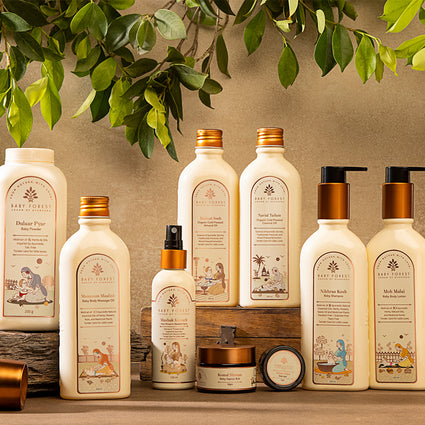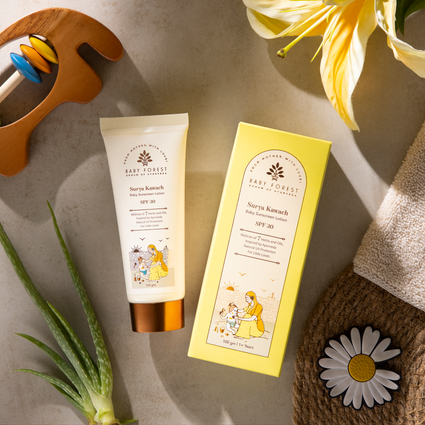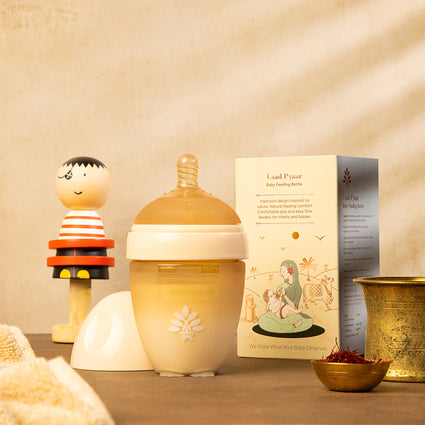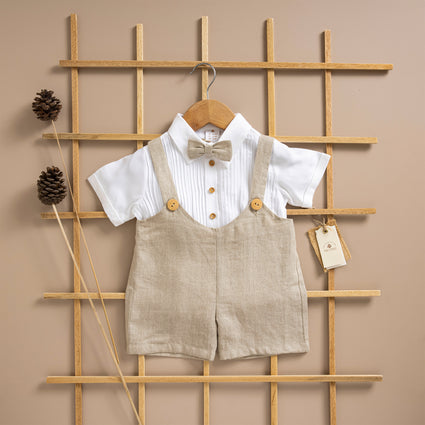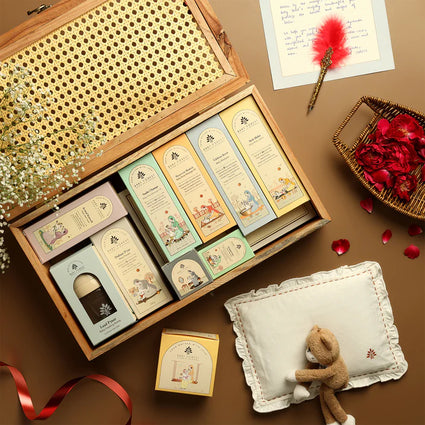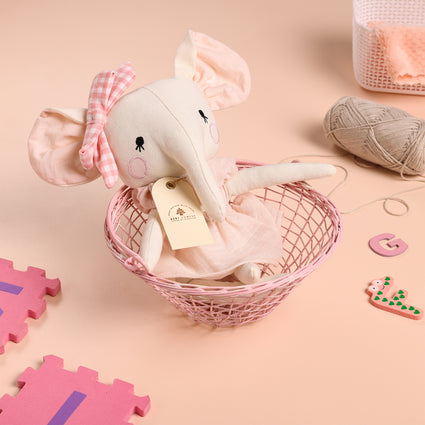Baby Care & Parenting Blogs

Secrets of Licorice: Ancient Remedy or Modern Superfood?
Parenting is a journey of continuous learning, blending tradition with modern care. Licorice, known as mulethi in India, is a natural herb valued for its soothing, antimicrobial, and anti-inflammatory properties. Exploring the Secrets of Licorice reveals how it can enhance your baby’s daily care with gentle, natural benefits—like using Organic Licorice for purity or Licorice Root Sticks for traditional wellness.
What is Licorice?
Licorice is a beloved herb, prized for its naturally sweet taste, soothing qualities, and healing potential. The Secrets of Licorice reveal themselves in its long-standing use in herbal remedies, where its anti-inflammatory and antimicrobial properties shine, supporting wellness in gentle, effective ways. Whether it’s Real Black Licorice, offering an authentic, robust essence, or Organic Licorice, delivering a pure and clean touch, this herb adapts to countless needs. Beyond its role in baby care—like calming irritated skin or easing mild congestion—it extends into broader traditions, bridging ancient wisdom with modern parenting. From vapor rubs to teething aids, licorice proves its versatility, providing a natural boost to daily routines. Its sweet charm and protective benefits make it a standout choice for nurturing little ones, ensuring comfort without harsh chemicals—a perfect blend of nature’s best for today’s caregivers seeking reliable, time-tested solutions.

Benefits of Licorice in Baby Care Products
Licorice has become a cornerstone in baby care, delivering gentle nourishment and protection that parents can trust—picture it as the Best Licorice for your tiny tot. Unlocking the Secrets of Licorice unveils its remarkable benefits, making it a standout ingredient in products designed for little ones. This herb’s natural properties soothe and shield, offering a safe, effective way to care for delicate skin and beyond. From calming irritations to providing a protective barrier, licorice proves its worth in everyday routines. Its gentle touch ensures babies stay comfortable without harsh chemicals, blending tradition with modern care seamlessly. Whether in creams, rubs, or cleansers, licorice enhances the nurturing experience, showing why it’s a go-to choice for thoughtful parenting today.
-
Gentle on Delicate Skin
Licorice brings its anti-inflammatory magic to baby care, easing redness and irritation with a soft, calming effect—perfect for diaper rash creams and soothing treatments. The Secrets of Licorice spotlight how it comforts sensitive skin, offering a gentler approach than something like Cinnamon Licorice might imply with its bolder profile. This herb works wonders on tender areas, reducing discomfort without overwhelming delicate systems. Parents can rely on its natural properties to keep their baby’s skin smooth and irritation-free, especially during those fussy moments. Unlike harsher options, licorice provides a nurturing touch that aligns with the needs of little ones, making it a staple in gentle care routines that prioritize safety and comfort above all.
-
Protection Against Bacteria
Licorice’s antimicrobial strength steps up in baby care, guarding fragile skin against harmful bacteria with ease. It shines in vapor rubs, soothing mild colds and congestion—a subtle treasure within the Secrets of Licorice, far from the intense flavor of Chocolate Licorice, which isn’t suited for babies. This herb acts as a natural shield, keeping infections at bay while offering relief during stuffy nights. Its protective qualities extend beyond the surface, ensuring your little one stays healthy and comfortable. Safe and gentle, licorice in these products provides peace of mind for parents, blending efficacy with nature’s care. It’s a quiet hero in maintaining baby wellness without relying on synthetic additives.
-
Natural Cleanser in Baby Products
Infused in shampoos and soaps, licorice keeps baby skin soft and tackles issues like cradle cap with a tender touch. The Secrets of Licorice reveal its knack for gentle cleansing, surpassing flavored varieties like Strawberry Licorice that don’t fit baby-safe formulas. This herb cleans without stripping natural oils, leaving skin smooth and nurtured—a perfect ally for daily baths. Its soothing nature ensures even the most sensitive scalps stay calm, making it a parent’s friend in maintaining hygiene naturally. Licorice stands out for its ability to care gently, avoiding the harshness other cleansers might bring, and keeps your baby’s skin in top shape with ease. -
A Healthy Sweetener
Licorice offers a natural sweetness that safely replaces refined sugar in teething products, easing the baby’s discomfort with care. This lesser-known perk among the Secrets of Licorice makes it ideal for little ones, not like Chocolate Licorice, crafted for adult indulgence. Its mild flavor comforts without overloading tiny systems, providing a gentle alternative in soothing gels. Parents can trust this herb to deliver sweetness that’s safe and effective, steering clear of artificial additives. Licorice’s role here highlights its versatility, ensuring teething moments are less stressful and more natural, keeping your baby happy and healthy with every use. -
A Natural Mosquito Repellent
Licorice powers mosquito repellents and patches, creating a soft yet strong shield against insects for your baby. The Secrets of Licorice extend to this natural defense, with Real Black Licorice extract boosting its strength beyond flavors like Cinnamon Licorice or Strawberry Licorice. This herb keeps bites at bay without harsh chemicals, offering a gentle barrier that’s safe for delicate skin. It’s a smart, natural way to protect your little one outdoors, blending efficacy with care. Licorice proves its worth here, giving parents a worry-free option to keep their baby comfortable and bite-free every day.
How to Use Licorice Safely
Using licorice safely unlocks more of its Secrets of Licorice for your baby’s care:
- Patch Test: Always test a small amount—like a dab of Black Licorice-infused cream—on your baby’s skin to check for reactions.
- Choose Baby-Specific Products: Use products formulated for babies to ensure the right concentration, avoiding strong types like Black Licorice.
- Follow Label Instructions: Stick to the recommended usage to avoid overexposure with this Best Licorice.
- Consult Your Pediatrician: Before introducing new products, seek medical advice for your baby’s safety, especially with unique options like Licorice Root Sticks.
Conclusion
Licorice is a gentle yet effective ingredient in baby care, offering soothing and protective benefits. By understanding the Secrets of Licorice, you can opt for baby-friendly formulations and consult your doctor before introducing new products to ensure the best care for your little one.

Baby's First Words: What to Expect and When
Becoming a parent is an exciting ride, full of new experiences and milestones. And one of the moments that gets every parent buzzing is when their baby says their first words. It's like a magical moment where they begin to express themselves and connect with the world around them. You might wonder when babies start talking. Well, it's different for every baby, but knowing what to expect can help you enjoy the journey and be ready when that first word comes!
The Journey to Baby's First Words
The journey to your baby's first words is a slow and steady one. From the start, babies are soaking in everything around them—especially language. They listen to all the sounds, including your voice, and start picking up on patterns. The little coos and babbles they make aren't just cute—they're their way of practicing. From these early sounds to saying their first simple word, each step is like building blocks for their future speech.
Remember, every baby moves at their own pace. Some might say their first word a little earlier, while others may take their time. But no matter when it happens, your baby is making amazing progress as they start figuring out how to communicate with you!
The Timeline of First Words
So, when do babies start talking? Most babies will say their first word around 12 months but don't stress if your little one isn't quite there yet. Some babies take their time, and that's totally normal!
By 6 months, you'll start hearing your baby babble away. It's such an exciting phase as they play with sounds, even if they aren't quite words yet. This babbling is actually a crucial step in learning to talk. Around 9 months, you might notice them using simple sounds like "mama" or "dada." While these aren't full words, they're a sign that your baby is getting ready to speak.
By 12 months, you might hear that magical first word—whether it's “mama," “dada," or something else they've been hearing a lot around them. Over the next few months, their vocabulary will start to grow, and by 18 months, you could be hearing a handful of words!
Factors That Influence Baby's First Words
There are a few things that can influence when babies start talking. Genetics definitely play a role, but so does the environment your baby is in. If your little one is surrounded by a language-rich environment—where caregivers are constantly talking, narrating daily activities, or reading aloud—there's a good chance they might start speaking a bit earlier. The more they hear and engage with language, the stronger their foundation for learning to talk.
Temperament is another factor. Some babies are naturally more vocal and eager to express themselves, while others might be a little quieter and take their time. Both are perfectly normal!
Another important factor is hearing. If your baby has any hearing issues, it could slow down their speech development. That's why regular checkups with your pediatrician are so important. Keeping track of their hearing and speech progress will help you ensure everything is developing as it should.
How to Encourage Your Baby's First Words
While every baby develops at its own pace, there are plenty of ways you can help encourage babies when they start talking. Here are a few tips to support their speech development:
Talk to Your Baby
Speak to your baby throughout the day. Narrate what you're doing, describe objects, and share your thoughts. This helps your baby absorb language.
Read to Your Baby
Reading aloud is one of the best ways to encourage language development. Start with picture books and simple, repetitive stories. As your baby gets older, they may even start pointing at pictures and making sounds in response.
Use Simple Words and Phrases
Keep your language simple. Use clear, easy-to-understand words to describe things. For example, instead of saying, "Let’s go to the park," say, "Park time!" to emphasize the word.
Encourage Imitation
Babies love to mimic sounds. When your baby babbles, imitate the sounds they make. This creates a back-and-forth exchange that builds language skills.
Create a Language-Rich Environment
Surround your baby with a variety of sounds and words. Play music, engage in conversations, and expose them to different people and voices.
Common Concerns About First Words
It's natural for parents to worry if their baby doesn't say their first word right on time. When do babies start talking? Most babies say their first word by around 12 months, but some may take a little longer. If your baby hasn't said any words by 18 months or isn't responding to their name or following simple instructions, it's a good idea to check in with your pediatrician. Early intervention can make a big difference if there are any concerns about speech or hearing delays.
That said, it's also important to know that some babies are just "late talkers." They may not say much at first, but they often catch up with their peers over time. Every child is unique, and language development happens on its own timeline. So, don't stress too much—keep supporting your baby as they grow and learn.
Celebrating and Supporting Speech Milestones
When your baby says their first word, it's such an exciting moment—definitely worth celebrating! Whether it's a simple "mama” or "dada," it’s a huge milestone in their development. Every new word is an achievement, so take a moment to enjoy these precious milestones with your little one.
As your baby continues to grow, keep supporting their speech development by engaging with them in meaningful ways. Sing songs, tell stories, and keep talking to them throughout the day. These interactions not only help reinforce their language skills but also give them the tools to expand their vocabulary. You're laying the groundwork for so many wonderful conversations ahead!
Conclusion
The journey to your baby's first words is such an exciting one, with lots of little steps along the way. When do babies start talking? While it can vary, most babies begin speaking around their first birthday. By creating a language-rich environment, engaging with your baby, and being patient, you're helping them reach this important milestone.
Every baby is unique, so trust your instincts and enjoy each stage of the journey. Before you know it, you'll be chatting away with your little one, and you'll look back fondly on the moment they said their first word. Enjoy the ride—it's full of beautiful milestones!

A Comprehensive Guide To Toilet Training For Your Baby
Toilet training is a challenging task for both babies and their parents. However, the process can be smooth and successful with the correct information and guidance. From the signs of readiness to the best techniques and approaches, we will provide you with expert advice on toilet training your baby.
Signs of Readiness
Before you begin toilet training your little one, it's important to ensure they are physically, cognitively, and behaviorally ready. This means looking for signs indicating your baby is ready to start potty training.
Physical signs indicate that your baby should be able to stay dry for longer periods. This shows that their bladder muscles are now strong enough to hold urine.
They may also be able to communicate their needs by pulling up their diaper or pants.
Cognitive signs of readiness include an understanding of basic concepts like wet and dry and an ability to communicate that their diaper needs to be changed.
Behaviorally, your baby may show an interest in the bathroom or want to imitate older siblings or parents using the toilet.
Toilet training can typically begin for children between the ages of 18 months to 3 years old, but it's important to note that every child is unique and may show readiness at varying times.
Pushing your baby to begin before they are ready can lead to frustration and setbacks. Instead, wait until your baby shows signs of readiness and is comfortable with the process.
Equipment and Supplies
To succeed in potty training, you'll need the right equipment and supplies.
- We recommend using a toilet training chair, a step stool, and comfortable underpants.
- You'll also need natural water-based baby wipes to keep your baby clean and fresh during the process. Our experts advise using natural baby wipes.
Techniques and Approaches
There are several potty-training methods and approaches that you can use, depending on your baby's needs and preferences.
- The no-diaper method involves slowly and gradually eliminating the use of diapers whenever at home so that your toddler signals to you when they must use the toilet.
- It will make them understand the wet feeling. The reward method involves giving your baby a small reward, like toddler toys or a piece of candy, every time they successfully use the toilet chair.
- Remember to use positive reinforcement, as this can shape your baby's motivation and confidence.
- Don't make your baby forcefully sit on the toilet too long if they are not doing poo or wee. The forceful attempts can make them think of this as a punishment.
Creating a Routine
Creating a consistent potty-training routine is key to success.
- Set a schedule for when your baby should use the toilet training seat and establish rituals like washing hands after every use.
- Positive reinforcement is also important at this stage; hence show praise and encouragement when your baby successfully uses the potty chair.
- Consistency and patience are paramount, as it can take time for your baby to get used to the routine.
- Feed your baby enough fibre and plenty of water to avoid constipation.
Troubleshooting Challenges
Toilet training can be challenging, and it's important to be prepared for setbacks.
- Common challenges include accidents, resistance, and regression. If your baby has an accident, remain calm and encourage them to try again. Do not scold them or shout at them.
- If they show resistance, take a break and try again later. Regression is also common, especially if your baby is going through a major change, like starting daycare or preschool.
- In these situations, being patient and supporting your baby is important. Remember, potty training tips are essential to stay calm and supportive, ensuring that your baby feels safe throughout the process.
Managing Expectations
Training your baby to use the toilet can take a lot of time and requires patience. It's important to have realistic expectations and be prepared to wait for progress. It's also normal to experience setbacks during the process. Your baby may take weeks or even months to fully grasp the routine. Celebrate small successes along the way, and don't forget to be gentle and supportive. When your baby is ready to transition from the training toilet to the regular toilet, it's important to make the transition as easy and comfortable as possible.
Conclusion
Though toilet training is a long and challenging process, it can be a rewarding experience for you and your little one if done with the right approach. At Baby Forest, we believe in providing the best possible care for your newborn baby. By following the potty-training tips and tricks outlined in this comprehensive guide, you'll be well on your way to successfully toilet-training your baby.
Also Read : Here Are The Best Ways to Treat Diaper Rashes: Home Remedies

How to Introduce Your Baby to Learning?
Have you ever wondered how you instinctively know an apple is a fruit and a cucumber is a vegetable? Who categorized them for you in your mind? From simple classifications like this to self-feeding, responding to faces, and eventually talking, a baby gradually learns everything over time. It's fascinating how quickly this happens-we often don't realize that our little ones might already know so much!
Newborns are truly 'new' to everything. Their experiences shape their understanding of the world. And as parents, you open the doors to these experiences. Letting your baby feel, explore, play, and speak is key to their development. If you're wondering how to introduce your baby to learning, don't worry-it's simpler than you think.
Here are some tips to help your baby learn and grow while making parenting joyful:
Baby Sound Learning
Teaching newborns begins with sound. In the first three months, your baby is at the babbling stage. Though they don't form words yet, they react to sounds! Watch how their tiny faces light up or turn toward a sound. One of the sweetest moments? When your baby smiles hearing your voice-it's the familiarity that makes them happy.
At this stage, baby toys with gentle sounds are a great choice. Music not only engages them but also enhances their development. It's a fun way to help newborns play and build their listening skills.
Baby Language Learning
Words are magical for babies. While they might not yet understand the emotions behind words, they learn their importance through your tone and actions. How to teach a newborn language? Start simple. Say "Good morning" to signify it's time to wake up and start the day. Say "Good night" to teach them that it's time to rest.
These little affirmations create structure and introduce your baby to language and routine. Saying "Goodbye" when leaving reinforces the concept of departures and arrivals. These small, consistent actions lay the foundation for their language development.
Baby Visual Learning
Babies are visual learners, but it takes time for their cognitive processes to develop. Unlike adults who can imagine things instantly, babies need concrete references. This is where visual aids come in.
Start with categories like animals, fruits, daily objects, vehicles, or body parts. When you show them a picture and say the word, they begin associating the two. Over time, this strengthens their ability to form complete sentences. Incorporating newborn brain development activities like picture books or flashcards can make this process even more engaging for your little one.
Baby Playtime Learning: Dexterity and Mobility
Playtime is vital for learning dexterity and mobility. Allow your baby to move things around, manipulate toys, and explore their surroundings. Toys that require hand movements, like stacking blocks, are excellent for enhancing hand-eye coordination.
Introduce toys that also teach shapes and colours. These are great activities for 1-year-olds who are curious and eager to explore. For example, FDA-approved, child-friendly stacking toys ensure safety while boosting creativity and motor skills.
As your child starts to crawl and walk, let them roam and explore freely. Yes, they might stumble or fall, but that's all part of the process. Give them gentle affirmations like "You're fine!" to reassure them and build their confidence. If you're wondering how to help a newborn play, remember to be a part of their explorations and encourage their little adventures.
Baby Skill Development: Portray Play
Do you remember those imaginary games from your childhood, like running a barber shop or pretending to teach dolls? These games play a crucial role in a child's brain development. Through pretend play, your child learns about relationships, social cues, and communication.
Parenting tips for new parents often emphasize play as a cornerstone of learning. You don't have to create rigid teaching moments. Instead, simply talk to your baby, play with them, and listen to what they say. These interactions will naturally evolve into meaningful learning experiences over time.
Help Your Baby Sleep and Learn
Sleep is crucial for newborn brain development. If you're wondering how to sleep-train a newborn, start by creating a consistent bedtime routine. This might include a warm bath, gentle sounds, or quiet playtime before bed. A well-rested baby is more active and curious, making it easier to introduce new learning activities.
Also Read: Types of Toys for Children by Age and Developmental Stage
Final Thoughts
There are no complicated rules when it comes to helping your baby learn. Teaching newborns is about creating opportunities for exploration, providing gentle guidance, and being present. From introducing newborn brain development activities to engaging in fun activities for 1-year-olds, everything you do contributes to their growth.
So, take a deep breath and enjoy this journey of discovery with your little one. Every smile, babble, and playful moment is a step toward a bright and curious future!
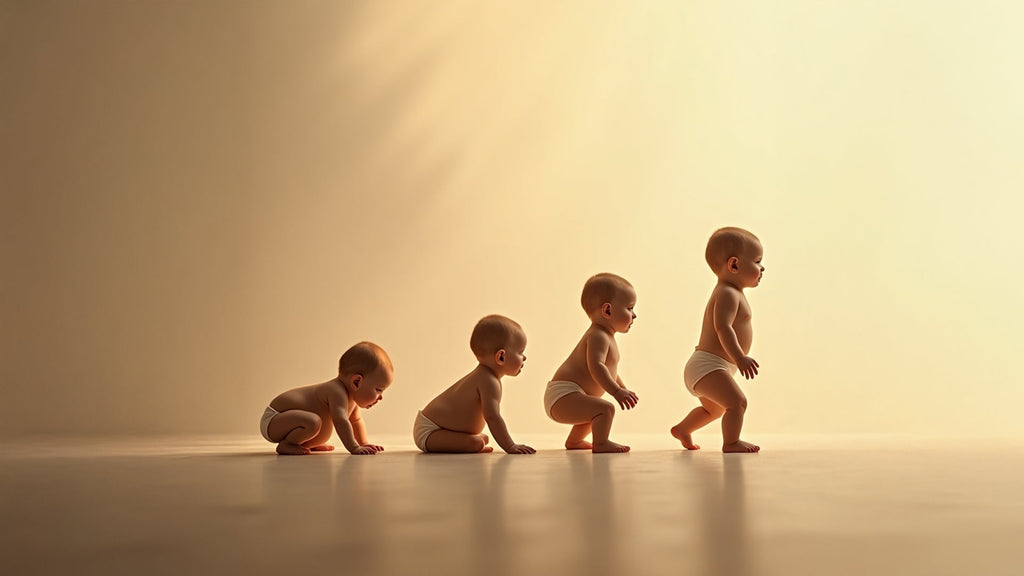
What Are Baby Growth Spurts? Everything Parents Need to Know
Becoming a parent is an amazing journey, but let's be honest-it comes with its fair share of surprises! One moment, your baby is all smiles and coos, and the next, they're fussier, hungrier, and growing like a little sprout overnight. This is what we call a growth spurt, and if you're wondering what's going on, you're definitely not alone. Let's talk about what growth spurts are and everything you need to know to get through them.
What Are Baby Growth Spurts?
A growth spurt in babies is a short period of rapid growth where your little one's body is busy getting taller, gaining weight, and sometimes even learning new skills. These spurts can happen suddenly, leaving you wondering what's going on-it's just your baby's way of growing and developing.
Growth spurts can feel challenging at times. Your baby might feed more often, have disrupted sleep, or seem a bit fussier than usual. But don't worry, this phase is completely normal and will pass soon, leaving you with a happy and thriving little one.
When Do Growth Spurts Happen?
Growth spurt in babies can be a bit predictable. They tend to happen during the first year, and there are some common phases when they're likely to occur:
- 1 to 3 weeks
- 6 weeks
- 3 months
- 6 months
- 9 months
Of course, every baby is different, so these timings can shift a little. Some might have a growth spurt earlier or later than expected, and that's fine. These spurts usually last a few days to a week. Before you know it, your baby will be back to their usual self-just a little bigger and more curious about everything around them!
Signs Your Baby Is Going Through a Growth Spurt
Wondering if your baby's going through a growth spurt? Here are some signs to look out for:
Increased Hunger:
Your baby might suddenly seem like they can't get enough milk. Whether you're breastfeeding or bottle-feeding, you may notice them feeding more often or for longer stretches.
Changes in Sleep Patterns:
Growth spurts can make your baby sleep more than usual to support all that growth. On the flip side, they might wake up more frequently for extra feed.
Fussiness:
When babies are going through a growth spurt, they can get extra cranky. They're hungry and tired, and their bodies are working hard, which can make them a bit irritable.
Clinginess:
You might find your baby wanting to be held more often. They're looking for comfort while going through this big developmental leap.
Noticeable Growth:
After the growth spurt, you might notice their clothes feeling a little snugger, or their head seems a bit bigger proof that they've been growing!
What Causes Baby Growth Spurts?
The exact triggers for growth spurt in babies aren't fully understood, but they're just a natural part of growing up. During these times, your baby's body and brain are growing at a rapid pace, with a mix of genetics, nutrition, and their surroundings all playing a role.
Physical Growth:
Their bones, muscles, and organs develop super quickly during these spurts.
Brain Development:
These growth spurts often come hand-in-hand with mental leaps, helping your baby pick up new skills and abilities.
Nutritional Needs:
As all this growing happens, babies need extra calories to fuel the changes, which is why they might seem hungrier than usual.
How to Handle Baby Growth Spurts?
Growth spurt in babies can feel intense, but with a little prep and patience, you can manage them. Here's how you can help your baby through it:
Follow Their Lead:
Let your baby eat and sleep as much as they need. Their body knows exactly what it's doing during a growth spurt.
Stay Hydrated:
If you're breastfeeding, be sure to drink plenty of water to keep your milk supply flowing strong.
Offer Comfort:
When your baby's fussy, hold them close and offer some cuddles. Sometimes, they just need that extra bit of reassurance.
Don't Skip Meals:
If your baby is eating solids, make sure their meals are balanced and full of nutrients to fuel all that growing.
Be Patient:
Remember, this phase is temporary! Your baby will settle back into their usual routine soon enough.
Myths About Baby Growth Spurts
There are a lot of myths out there about growth spurt in babies, so let's clear a few up:
Myth 1: Growth spurts only happen in the first year.
Fact: Actually, growth spurts can happen throughout childhood, especially during those teenage years.
Myth 2: Fussiness always means a growth spurt.
Fact: While fussiness is common during a growth spurt, it could also be due to teething, illness, or just a bad day.
Myth 3: Babies need supplements during growth spurts.
Fact: Most of the time, a well-balanced diet or breast milk provides everything your baby needs during a growth spurt.
When to Be Concerned?
While growth spurt in babies is totally normal, there are a few times when it's a good idea to check in with a doctor:
- If your baby isn't gaining weight consistently.
- If they're feeling unusually lethargic or extra fussy for a longer period.
- If you notice other worrying symptoms, like a fever or rash.
Trust your instincts. If something doesn't feel right, it's always okay to reach out to a professional for advice. Better safe than sorry!
Conclusion
Growth spurt in babies can be challenging, but they're also a sign that your little one is growing and thriving. With a bit of understanding and a lot of love, you can help them through these phases with ease. Remember, every baby is unique, and their growth journey will unfold at its own pace. Embrace the changes, cherish the milestones, and know that you're doing an amazing job as a parent.
Related Read - Importance of Baby Growth Chart for a Parent
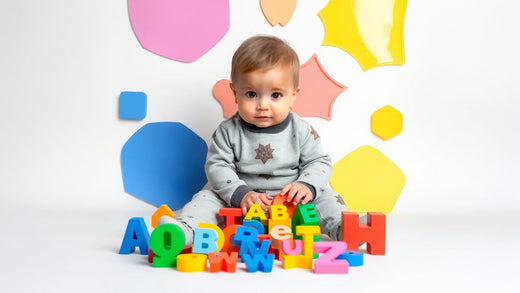
Top 5 Nursery Rhymes Every Parent Should Teach Their Kids
Parenting is a journey filled with magical moments, isn’t it? And one of the sweetest things you can share with your little ones is nursery rhymes. These timeless songs and verses aren’t just entertaining; they’re incredibly important for your child’s growth and development. Whether it’s the soothing melody of “Twinkle, Twinkle, Little Star” or the playful actions of “Itsy Bitsy Spider,” nursery rhymes are so much more than fun. They’re essential building blocks for your child’s learning and bonding.
Why Nursery Rhymes Are Essential for Kids
Nursery rhymes are so much more than just catchy tunes—they’re little powerhouses of learning! They play a big role in helping your child grow in so many ways. For starters, they’re amazing for language development.
The playful rhymes and rhythms make it easier for kids to pick up new words and practice pronunciation. Plus, repeating them helps sharpen memory and teaches kids to recognize patterns in language.
But it doesn’t stop there! Nursery rhymes sneak in basic math and problem-solving skills too. Think about counting sheep in Baa, Baa, Black Sheep or rowing in sync with Row, Row, Row Your Boat. These simple songs are like tiny lessons disguised as fun.
And the best part? They bring you closer to your little one. Singing nursery rhymes together creates special bonding moments that turn into cherished memories. It’s a beautiful way to nurture a loving connection.
Now that we’ve uncovered just how magical nursery rhymes are, let’s get into the top 5 every parent should teach their kids—and why they matter!
The Top 5 Nursery Rhymes and Why They Matter
-
Twinkle, Twinkle, Little Star
This classic nursery rhyme has enchanted children for generations. It’s simple melody and soothing rhythm make it perfect for bedtime.
The lyrics inspire children to wonder about the stars and the night sky, sparking their imagination. Words like ‘diamond’ and ‘sparkle’ introduce new concepts in an engaging way.
Why not use Twinkle, Twinkle, Little Star to kick off a conversation about the universe? You could even make it extra special by heading outside for some stargazing on a clear night—it’s a magical way to bring the song to life!
-
Itsy Bitsy Spider
The little spider’s adventures climbing up the spout are not only fun but also packed with life lessons. When the spider gets washed away and climbs back up, it’s a perfect way to teach kids about persistence and never giving up. Plus, the hand motions that go along with the song are a great way for kids to work on coordination and fine motor skills.
You can make it even more fun by acting out the spider’s journey together. It’s a great way to bring the song to life and make learning super hands-on!
-
Row, Row, Row Your Boat
This cheerful tune is ideal for encouraging teamwork and imagination. Singing it as a duet or in a group encourages cooperation. The gentle motion of ‘merrily rowing’ invites children to visualize a serene journey down a river.
Turn this into a playful activity by pretending to row a boat together. For added fun, you can even make a cardboard boat.
-
Baa, Baa, Black Sheep
This is a nursery rhyme that introduces counting and sharing in the simplest way. The story of dividing the wool teaches kids about giving and generosity. Kids learn counting in a practical and memorable context.
Reinforce the message of sharing by acting out the rhyme with stuffed animals or dolls.
-
Here We Go Round the Mulberry Bush
A lively tune perfect for teaching daily routines and having fun. The verses often describe daily activities like washing clothes or brushing teeth, helping kids understand the importance of a routine. It’s an active rhyme that gets kids moving, making it perfect for playtime.
Add your verses about your child’s daily routine. This personal touch makes it even more meaningful.
How to Make Nursery Rhymes a Learning Experience
The magic of nursery rhymes lies in their versatility. You can turn them into powerful learning tools with just a little creativity. Here are some tips:
-
Add Actions:
Pair rhymes with hand movements or dances to engage the mind and body. -
Ask Questions:
After singing, ask your child questions like, “Why do you think the spider kept climbing?” This sparks critical thinking. -
Incorporate Props:
Use toys, puppets, or drawings to bring the stories to life. -
Sing in Different Languages:
If you’re bilingual, teach the same rhyme in another language to expand your child’s linguistic skills. -
Story Extensions:
Create short stories based on rhymes. For instance, what happens after the spider climbs up again?
How Nursery Rhymes Build Lifelong Memories
As simple as they may seem, nursery rhymes have a way of sticking with us. Even as adults, we often find ourselves humming them. These rhymes are tied to some of our earliest and happiest memories. They remind us of bedtime cuddles, playful afternoons, and the warmth of being surrounded by love.
Singing nursery rhymes together can become a cherished tradition for your kids. It’s a way to celebrate milestones, calm their fears, or simply share a moment of joy. These songs may be short, but their impact lasts a lifetime.
Conclusion
Nursery rhymes are more than just melodies. They’re a gateway to learning, imagination, and bonding. By teaching your kids classics like ‘Twinkle, Twinkle, Little Star’ and ‘Itsy Bitsy Spider’, you’re giving them tools for growth and creating precious memories.
So, pick a rhyme, gather your little ones, and start singing. You’re not just teaching them words but about love, resilience, and the joy of togetherness. And isn’t that what parenting is all about?
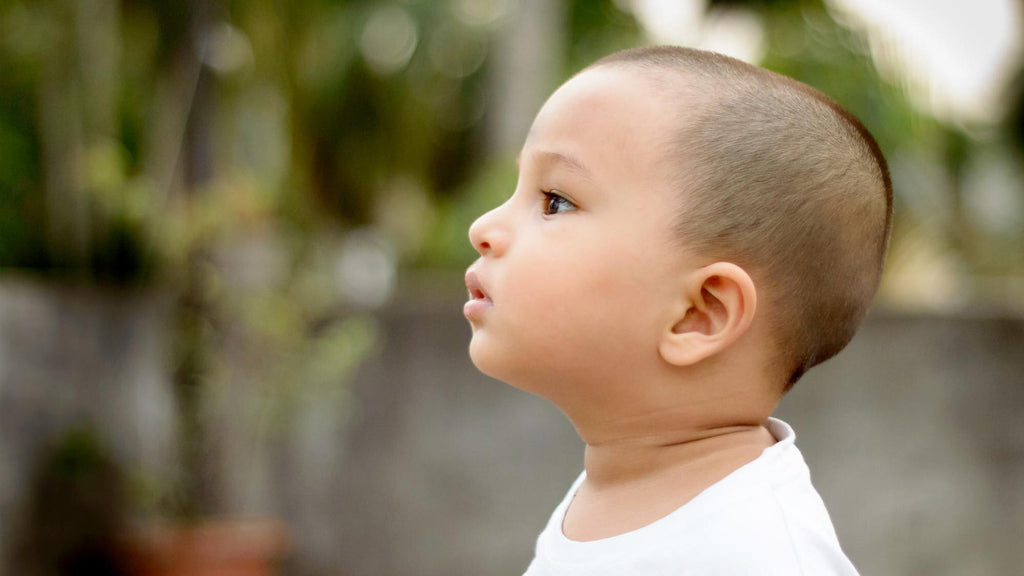
Why Is My Baby Losing Weight After Birth? When to Be Conc...
As a new parent, one of the first things you will notice during your baby’s initial check-ups is how closely their weight is monitored. So, it can be surprising or even worrying to hear that your baby has lost some weight after birth. Rest assured, this is a common occurrence and, in most cases, completely normal. But how much weight loss is normal? And when should you be concerned?
In this blog, we’ll explore why babies lose weight after birth when it becomes a reason to worry and what you can do to help your baby regain their birth weight and thrive.
Why Do Babies Lose Weight After Birth?
It’s natural for newborns to lose some weight in the first few days after birth. In fact, most babies lose about 5-10% of their birth weight within the first week. Here’s why:
-
Fluid Loss
Babies are born with extra fluid in their bodies, which they lose in the first few days. This is perfectly normal, and part of their body is adjusting to life outside the womb.
-
Limited Intake
In the first few days, babies consume small amounts of colostrum, the nutrient-rich milk produced by the mother. While it’s packed with essential nutrients, the volume is low, which might not meet their full caloric needs initially.
-
Adjustment to Feeding
Breastfeeding is a learning process for both mom and baby. Sometimes, it takes a few days for the baby to latch properly and for milk production to increase, which can contribute to temporary weight loss.
-
Meconium Passing
Babies pass their first stool, called meconium, shortly after birth. This also contributes to a small amount of weight loss.
How Much Weight Loss Is Normal?
A weight loss of 5-7% of birth weight in the first week is considered normal for most babies. Some may lose up to 10%, which is still within the acceptable range, provided they regain the weight soon after. Most babies return to their birth weight by 10-14 days of age.
When Should You Be Concerned?
While weight loss after birth is normal, there are instances where it might signal an underlying issue. Here’s when to consult your pediatrician:
-
Excessive Weight Loss
If your baby loses more than 10% of their birth weight, it’s important to monitor it closely and discuss it with your doctor.
-
Slow Weight Regain
If your baby hasn’t regained their birth weight by 2 weeks of age, it’s worth investigating the cause.
-
Signs of Dehydration
Symptoms like a dry mouth, fewer than six wet diapers a day, or sunken soft spots on the head (fontanelles) could indicate dehydration.
-
Difficulty Feeding
If your baby struggles to latch, falls asleep too quickly during feeds, or seems unsatisfied, it could impact their weight gain.
-
Unusual Symptoms
Persistent lethargy, irritability, or yellowing of the skin (jaundice) are signs that something might not be right.
What Can Cause Excessive Weight Loss?
Several factors can contribute to more significant weight loss in newborns, including:
-
Breastfeeding Challenges
Issues like a poor latch, tongue-tie, or insufficient milk supply can result in inadequate feeding.
-
Formula Feeding Issues
For formula-fed babies, improper mixing of formula or feeding schedules can sometimes lead to insufficient calorie intake.
-
Medical Conditions
Conditions like jaundice, infections, or metabolic disorders can affect a baby’s ability to feed and gain weight.
-
Preterm Birth
Premature babies often have more difficulty feeding and regulating their bodies, which can impact their weight.
How to Help Your Baby Regain Weight
If your baby’s weight loss is within the normal range, here are some tips to help them regain their birth weight:
-
Focus on Feeding
Feed your baby frequently, typically every 2-3 hours, or on demand. Breastfeeding mothers should aim for 8-12 feeds in 24 hours to ensure adequate milk intake.
-
Ensure a Proper Latch
A good latch is crucial for efficient feeding. If you’re unsure, seek help from a lactation consultant who can guide you through the process.
-
Track Feeding Cues
Look for signs that your baby is hungry, like rooting, sucking motions, or putting their hands to their mouth. Early feeding cues help ensure your baby gets enough nourishment.
-
Pump If Needed
If milk supply is a concern, consider using a breast pump to stimulate production and offer expressed milk to your baby.
-
Supplement If Advised
In cases where breastfeeding alone isn’t sufficient, your doctor may recommend supplementing with formula. Always follow your pediatrician’s guidance.
-
Monitor Diaper Output
Wet and dirty diapers are a good indicator of your baby’s intake. Aim for at least 6 wet diapers and 3-4 soiled diapers per day by the end of the first week.
-
Skin-to-Skin Contact
Holding your baby skin-to-skin encourages breastfeeding and helps regulate their body temperature and heart rate.
Conclusion
Weight loss after birth is a natural part of your baby’s adjustment to life outside the womb. With proper feeding and care, most babies regain their weight within the first couple of weeks.
Remember, every baby is different, and so is their growth pattern. Don’t hesitate to lean on your pediatrician, lactation consultant, or support network for guidance.

What to Do About Flat Head Syndrome in Babies
As new parents, one of your top priorities is making sure of your baby’s health and well-being. So, it’s natural to feel concerned if you notice a flat spot forming on your baby’s head. Known as Flat Head Syndrome or Positional Plagiocephaly, this condition can make the back or side of a baby’s head appear flattened. The good news is that it’s common, and in most cases, it’s temporary and treatable with the right steps.
This blog will guide you through the causes, treatments, and prevention methods for Flat Head Syndrome, helping you ensure your baby’s head develops naturally and beautifully.
What Causes Flat Head Syndrome?
Babies are born with soft, flexible skulls, which allow their heads to pass through the birth canal and accommodate rapid brain growth in the first year of life. However, this also makes their skulls more susceptible to flattening.
The most common causes include:
-
Prolonged Pressure on One Spot:
Babies often lie in the same position for extended periods, especially during sleep. This can result in flattening on the back or side of the head. -
Torticollis:
A condition where neck muscles are tight, causing the baby to favour turning their head to one side. This can lead to uneven pressure on the skull. -
Premature Birth:
Premature babies have softer skulls and spend more time lying in one position in the NICU, increasing the risk of developing a flat head. -
Use of Baby Gear:
Spending too much time in car seats, swings, or bouncers can also contribute to flat spots by limiting a baby’s movement.
Signs to Look For-
Flat Head Syndrome can appear as early as 6 to 8 weeks of age. Here are the signs to watch out for:
-
Flat Spot:
A noticeable flat area on the back or side of your baby’s head.
-
Asymmetry:
The ears may seem uneven, or the face may appear slightly uneven.
-
Head Preference:
Your baby may always turn their head to one side when lying down.
If you notice these signs, it’s best to consult your paediatrician for advice and further evaluation.
How to Treat Flat Head Syndrome
In most cases, Flat Head Syndrome improves as your baby grows, becomes more mobile, and spends less time lying down. Here are some effective ways to address it:
-
Tummy Time
Tummy time is one of the best ways to prevent and treat Flat Head Syndrome. Placing your baby on their tummy while they’re awake helps strengthen their neck, shoulders, and back, encouraging them to lift and turn their head.
Start with short sessions, like 3-5 minutes, a few times a day, and gradually increase the duration as your baby gets used to it. Always supervise tummy time to ensure your baby’s safety. -
Repositioning
Repositioning your baby’s head during sleep and play can help distribute pressure evenly on their skull. Try these tips:
Alternate the direction your baby faces in the crib each night.
Encourage your baby to turn their head to the less preferred side by placing toys or sounds on that side.
Limit time spent in car seats, swings, and bouncers when not travelling. -
Using a Mustard Pillow
A mustard pillow, commonly used in Indian households, is an age-old remedy for preventing and treating Flat Head Syndrome. Filled with mustard seeds, these pillows are soft and moldable, helping to support the baby’s head evenly while preventing flat spots. Additionally, they provide gentle cushioning that allows the baby’s head to naturally shape over time.

-
Physical Therapy
If Flat Head Syndrome is caused by torticollis, your paediatrician may recommend physical therapy to stretch and strengthen your baby’s neck muscles. A therapist can also teach you simple exercises to do at home, making it easier to improve your baby’s head mobility. -
Helmet Therapy
In severe cases, your doctor might suggest helmet therapy. This involves wearing a custom-fitted helmet that gently reshapes the baby’s head over time. While this is usually reserved for extreme cases, it’s a safe and effective option when recommended by a specialist.
How to Prevent Flat Head Syndrome
Preventing Flat Head Syndrome is easier than treating it. Here are some tips to keep in mind from the start:
-
Encourage Movement:
Regularly change your baby’s position throughout the day, encouraging them to move and turn their head naturally. -
Limit Time in Baby Gear:
Avoid keeping your baby in car seats, swings, or bouncers for long periods. -
Promote Active Play:
Use tummy time and floor play to encourage movement and head control. -
Use Supportive Pillows:
A mustard pillow can help prevent flat spots while offering your baby the right kind of support. -
Monitor Sleeping Position:
While it’s important to put your baby to sleep on their back to reduce the risk of SIDS (Sudden Infant Death Syndrome), you can gently reposition their head to alternate sides.
When to Seek Professional Help
Most cases of Flat Head Syndrome improve with time and simple interventions, but there are instances where professional help may be needed. Consult your pediatrician if:
- The flat spot worsens despite your efforts.
- You notice severe asymmetry in your baby’s head or face.
- Your baby struggles to turn their head or seems to have a tight neck.
Early intervention can make a big difference, so don’t hesitate to reach out if you’re concerned.
Conclusion
Addressing Flat Head Syndrome isn’t just about fixing a flat spot—it’s about supporting your baby’s overall development. Remember, every baby develops at their own pace, and with your love and attention, they’ll thrive.
So, take it one step at a time, enjoy these precious moments with your baby, and know that you’re doing a fantastic job. After all, a happy and healthy baby starts with small, thoughtful choices that show just how much you care.

Essential Tips for Caring for a Premature Baby at Home
Caring for a premature baby at home can be overwhelming for parents. Premature babies, also known as preemies, are born 37 weeks before gestation and often need extra attention due to their underdeveloped systems. Bringing a preemie home after spending days or even weeks in the NICU (Neonatal Intensive Care Unit) is a big milestone, but it comes with challenges.
As parents, you may be concerned about how to care for your preemie and ensure they grow strong and healthy. The good news is that with a little extra care, patience, and love, your baby can thrive just like any full-term baby. Here are some essential tips to help you care for your premature baby at home.
-
Establish a Safe and Clean Environment
Premature babies have fragile immune systems, making them more prone to infections. One of the first things to focus on is creating a clean and safe environment for your baby. Here’s what you can do:Hygiene:
See to it that everyone who handles the baby, including yourself, washes their hands thoroughly with soap and water before touching the baby.Limited Visitors:
Try to limit the number of visitors, especially during the first few months. If someone is sick, it’s better to postpone the visit to avoid exposing your baby to germs.Sanitize Regularly:
Clean and sanitize all baby equipment, including feeding bottles, toys, and surfaces that your baby frequently comes in contact with.
A safe environment means fewer chances of your baby catching any illness, giving them the time to grow and develop without added complications.
-
Follow a Feeding Schedule
Feeding a premature baby may require more patience and attention compared to full-term babies. Preemies often have weaker sucking reflexes, which means they may tire out quickly during feeding. Depending on your baby’s needs, you may be breastfeeding, bottle-feeding, or using a combination of both.Frequent Feedings:
Premature babies usually need to be fed more frequently because their stomachs are smaller. Your doctor will guide you on the exact quantity and frequency, but feedings every 2 to 3 hours are common.Special Formula:
If you’re not breastfeeding or need to supplement, your doctor may recommend a special formula designed for preemies. This formula is enriched with extra calories, protein, and nutrients to help with weight gain.Monitor Weight:
Keep track of your baby’s weight gain. Regular weight checks at home or with the paediatrician will help ensure your baby is growing at a healthy pace. -
Maintain a Comfortable Temperature
Premature babies are less able to regulate their body temperature, making them more vulnerable to cold. It’s essential to keep your home warm and ensure your baby is dressed appropriately.Room Temperature:
The room where your baby sleeps should be warm but not too hot. A room temperature of around 24-26°C is ideal.Layering Clothes:
Dress your baby in layers to help maintain warmth. Soft cotton clothing is breathable and comfortable for your baby. You can add a light blanket if needed but be sure not to overheat the baby.Skin-to-Skin Contact:
Also known as kangaroo care, skin-to-skin contact is a great way to keep your baby warm and promote bonding. Holding your baby close to your chest can regulate their body temperature, and it’s incredibly soothing for both you and your baby. -
Monitor Their Breathing
Preemies can sometimes have irregular breathing patterns. In the NICU, their breathing was likely monitored, but you may feel nervous at home. Learning to monitor your baby’s breathing can provide peace of mind.Normal Breathing:
Newborns, especially preemies, often have shallow and fast breathing, which is normal. However, if you notice your baby stops breathing for more than 10-15 seconds, or if they seem to be struggling to breathe, contact your doctor immediately.Use a Breathing Monitor:
If recommended by your doctor, you can use a home apnea monitor to track your baby’s breathing patterns. These monitors alert you if your baby’s breathing slows or stops. -
Encourage Bonding and Development
Premature babies need just as much love and attention as any other baby, if not more. Here are some simple ways to encourage bonding and aid their development:Kangaroo Care:
As mentioned earlier, skin-to-skin contact is incredibly beneficial for preemies. It helps regulate their temperature, stabilizes their heart rate, and promotes emotional bonding.Talk to Your Baby:
Even though your baby may not understand words yet, talking to them helps stimulate their brain and foster emotional connection. Soft, soothing tones can be comforting.Tummy Time:
Once your paediatrician gives you the green light, you can start incorporating short bursts of tummy time into your baby’s routine. This helps strengthen their neck and upper body muscles, which is important for motor development. -
Stick to Doctor’s Appointments
Regular checkups are essential for premature babies. These appointments will monitor your baby’s growth, development, and overall health. It’s also an opportunity for you to ask any questions or voice concerns.Immunizations:
Preemies need immunizations on a similar schedule to full-term babies, but sometimes they may require extra vaccines or adjustments based on their early birth. Be sure to follow your paediatrician’s vaccination plan.Developmental Milestones:
Your paediatrician will also monitor your baby’s developmental milestones, such as holding up their head, smiling, and rolling over. Don’t worry if your preemie takes a little longer to reach these milestones—it’s normal for them to have a delayed timeline.

Conclusion
Caring for a premature baby requires a bit more attention, but it also offers unique and beautiful moments. Trust your instincts as a parent, and don’t hesitate to reach out to your paediatrician whenever you have concerns. Remember that while your baby may need extra care now, with your love and patience, they’ll grow stronger each day.

Why Almond Oil Is a Must-Have for Your Baby's Skincare Ro...
Almond oil is an excellent choice for keeping your baby’s skin healthy. It is light and nourishing, containing high levels of omega-3 fatty acids, vitamins A, B, and E.
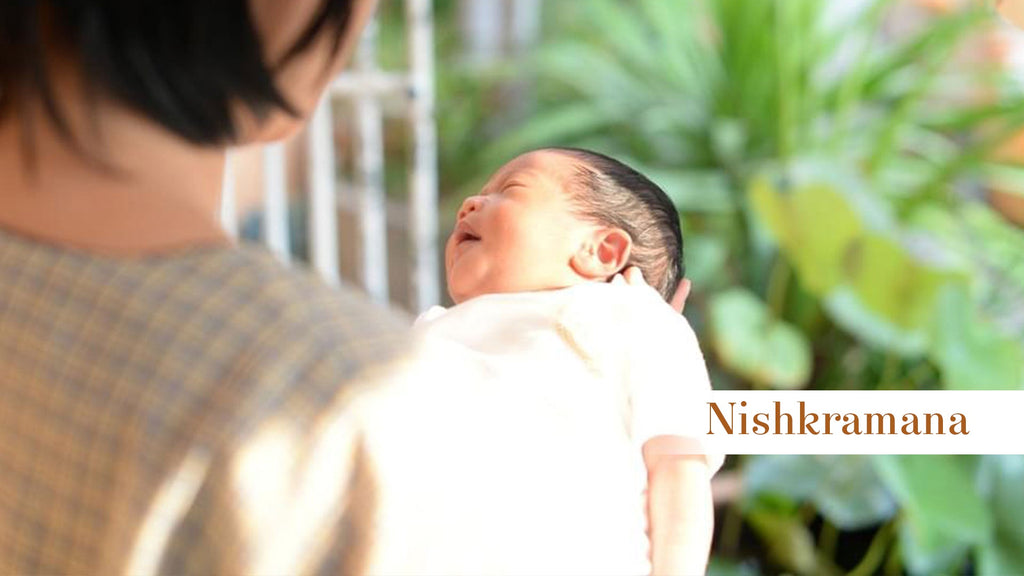
Nishkraman: The Right Time to Take Your Newborn Out
The journey of life in Hindu tradition is marked by a series of sacred rituals known as Samskaras. These rites of passage guide an individual through various stages of life, from birth to death. One of the early Samskaras performed for a newborn is the Nishkraman Sanskara, also known as the "First Outing" or "First Outdoor Ceremony." This ritual is a significant milestone, symbolizing the baby's first introduction to the outside world and the beginning of their relationship with nature and the universe.
What is Nishkraman Sanskara?
Nishkraman Sanskara is the ritual of taking a baby outside the home for the first time. Traditionally, this ceremony is performed in the fourth month after the baby's birth, though the timing can vary depending on regional customs and family preferences. The word "Nishkraman" is derived from Sanskrit, where "Nish" means "out", and "Kraman" means "to step" or "to move." Thus, Nishkraman Sanskara literally translates to "the act of going out."
What is the right time for Nishkramana?
The fourth month is the right time for taking the baby for an outing. Before this, it is too early for a child to step out. Their immunity is also not favourable for their interactions with the world. The ceremony is held on an auspicious day of the fourth month, like an Ekadashi or Pradosh. Some parents conduct the Nishkramana in the second month if the child is healthy and generally in the fourth month. The day chosen should be right according to the positions of the stars of a child. Some parents believe in following the date and muhurat told by their local priest.
Preparing For the Ritual
Rituals of Nishkraman Sanskara
Preparation:
The preparation for Nishkraman Sanskara begins with selecting a suitable day for the ceremony. The family may consult a priest or astrologer to choose an auspicious date and time. On the day of the ceremony, the baby is bathed, dressed in new clothes, and adorned with a small mark of sandalwood paste or vermillion on the forehead as a symbol of protection.
The Ceremony
The actual ceremony begins with the parents, usually the father or a senior family member, carrying the baby outside the home for the first time. The baby is typically taken to a temple, a garden, or any natural setting where the elements of nature—sun, air, earth, and water—are present.
At the chosen location, the baby is introduced to the sun by holding them up in the direction of the rising or setting sun. The parents may recite prayers or mantras, invoking the blessings of Surya (the sun god) for the baby's health and well-being. Some families also offer a small ritual of Arghya, which involves offering water to the sun as a mark of respect and gratitude.
Post-Ceremony
After the outdoor ritual, the family may return home and perform a small Puja (prayer) to conclude the ceremony. This may involve lighting a lamp, offering sweets to the gods, and distributing Prasad (blessed food) among family members and friends who were present during the ceremony.
The ceremony often ends with a feast or a small gathering where the baby is introduced to extended family and friends, marking their official entry into the community.
Scientific Perspective on Nishkraman Sanskara
While the Nishkraman Sanskara is deeply rooted in spiritual beliefs, it also has a practical and scientific basis. Exposure to sunlight is crucial for the synthesis of Vitamin D in the baby's body, which is essential for healthy bone development and overall growth. The ritual of taking the baby outside also promotes early socialization and helps the child develop a connection with nature.
Moreover, by the fourth month, a baby's vision has developed enough to start recognizing shapes, colours, and movements. The experience of being outdoors stimulates the baby's senses, aiding in cognitive and sensory development.
In today's world, while the specifics of the Nishkraman Sanskara may vary, the essence of the ritual remains the same. It is a reminder of the importance of nurturing a child's relationship with nature and the community, and of the timeless traditions that continue to enrich our lives.

Baby Milestones and Development of a 9-Month-Old
As your baby approaches the nine-month mark, you might find yourself amazed at how much they've grown and changed. This is a period filled with discovery and learning. Your baby is becoming more curious, active, and engaged with the world around them. At nine months, many babies hit key milestones, showing just how far they've come since birth.
This blog will guide you through the important nine months of milestones and developmental stages, helping you understand what to expect and how to support your little one's growth.
Physical Development
By nine months, your baby is likely very mobile. They may be crawling, scooting, or even pulling themselves up to stand. These movements are all part of their growing strength and coordination. If your baby isn't crawling yet, don't worry—some babies skip crawling altogether and move straight to walking.
At this stage, your baby's fine motor skills are also improving. They can pick up small objects between their thumb and forefinger, a skill known as the pincer grasp. This is an important milestone that helps with feeding and playing. You might notice your baby trying to pick up bits of food during meals, which is a great time to offer safe finger foods like small pieces of banana or soft-cooked vegetables.
Their hand-eye coordination is getting better, too. You'll see them passing toys from one hand to another or reaching out to grab objects that catch their eye. These activities build their physical abilities and boost their cognitive development.
Social and Emotional Development
Socially, your baby is becoming more interactive and expressive. They might start waving hello or goodbye, showing affection by hugging or kissing, and even displaying shyness around strangers. This is a sign that your baby is developing stronger social bonds and beginning to understand relationships.
At nine months, your baby may also experience separation anxiety, becoming upset when you leave the room. This is a normal part of development, as they are learning about object permanence—the idea that things continue to exist even when they are not seen. While this can be challenging, it's also a sign that your baby is forming a secure attachment to you.
Babies at this age often enjoy playing games like peekaboo, which helps reinforce their understanding of object permanence. They may also start to imitate simple actions, like clapping or making faces, which shows they are learning from their environment and the people around them.
Cognitive Development
Cognitive development at nine months is all about exploration and problem-solving. Your baby is starting to understand how things work, and they love to experiment. For example, they might drop a toy repeatedly to see what happens or figure out how to open a cabinet.
This is a great time to introduce toys that challenge their thinking, like stacking blocks, simple puzzles, or shape sorters. These toys encourage your baby to use their hands and minds together, which is crucial for their cognitive growth. Playing with these types of toys also helps your baby develop patience and concentration as they figure out how things fit together.
Language development is another exciting part of cognitive growth at this stage. Your baby may start to babble more, making sounds like "mama" or "dada." They may not yet know what these words mean, but they are learning the basics of language and communication.
You can support this by talking to your baby often, describing what you're doing, and naming objects around the house. Reading books with simple pictures and words can also be a fun way to build their vocabulary.
Language and Communication
By nine months, your baby is likely to become more vocal and responsive. They might start to understand simple words like "no," "bye-bye," or their own name. You'll notice them turning their head when you call their name or responding with excitement when you ask if they want to play. These are key milestones in language development in the last nine months.
Your baby's babbling will become more varied as they experiment with different sounds. Even though they might not be forming full words, this babbling is an important step toward speech. Encourage this by talking back to your baby, repeating the sounds they make, and engaging in simple conversations. You might find that your baby enjoys copying the sounds and gestures you make, which is a fun way to bond and support their learning.
At this age, babies also start to use gestures to communicate. They might point to something they want or raise their arms to be picked up. These non-verbal cues are an important part of early communication, helping your baby express their needs and desires before they can use words.
Sensory and Motor Skills Development
Your baby's senses are becoming more refined at nine months. They can see farther, distinguish between different colours, and are more interested in exploring their environment through touch, taste, and sound. You might notice them reaching for different textures, from soft blankets to smooth toys or banging objects together to make noise.
This is a good time to introduce sensory toys that offer a variety of textures, sounds, and colours. Soft books with different textures, rattles that make noise when shaken, or toys that crinkle when touched can keep your baby engaged and help them learn about the world around them.
As your baby becomes more mobile, they may start to explore their environment more actively. Baby-proofing your home is important at this stage to keep your curious little one safe as they crawl, pull up, and cruise around furniture.
The nine-month mark is a time of tremendous growth and discovery for your baby. They are becoming more independent, social, and curious about the world. As they reach these nine-month milestones, it's important to provide a safe and stimulating environment that encourages exploration and learning.
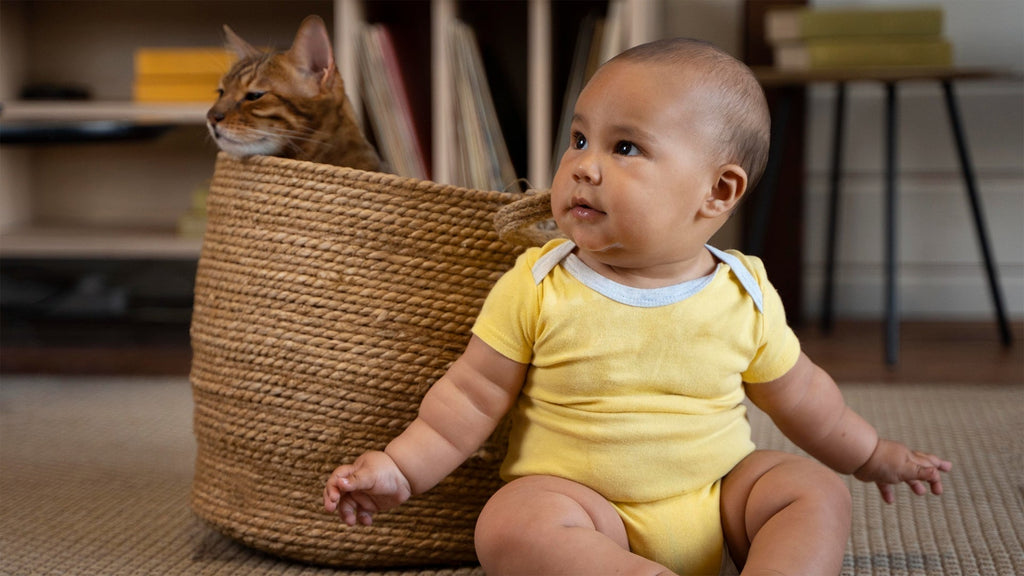
Baby Milestones and Development of a 6-Month-Old
The six-month mark in your baby’s life is a time of incredible growth and change. It’s around this age that your little one starts to show new skills and an eagerness to explore the world around them. As a parent, you might marvel at how much they’ve grown in such a short time. From developing stronger muscles to babbling, these milestones are not just exciting—they’re essential steps in your baby’s journey. In this blog, we’ll dive into the key six-month milestones you can expect at this stage, helping you understand and support your baby’s amazing progress.
Physical Development
By six months, your baby is becoming more active and curious. They may be able to roll over from their tummy to their back and even from their back to their tummy. This new mobility is an exciting step in their physical development. You’ll likely notice your baby trying to push up on their hands and knees, a precursor to crawling. Some babies may even start sitting up with little or no support, a major milestone.
Your baby’s grasp is also improving. They might start to reach out for toys, hold them, and even pass them from one hand to the other. This is a good time to introduce simple toys that are easy to grasp, such as soft blocks or rattles. These toys entertain your baby and help develop their fine motor skills.
Social and Emotional Development
At six months, your baby is likely to become more social and interactive. You’ll notice them smiling more often, especially in response to your voice or face. This is an important infant developmental milestone that shows your baby is learning to connect with others.
Your baby may start to recognize familiar faces and show a preference for people they know. They might reach out to be picked up or show excitement when you enter the room.
On the flip side, they may also begin to show signs of separation anxiety, becoming upset when you leave their sight. This is a normal part of their emotional development as they begin to understand that you exist even when they can’t see you.
Cognitive Development
Cognitive development is about how your baby learns and thinks. By six months, your baby is becoming more curious about the world around them. They’re learning that their actions can cause things to happen, such as shaking a rattle to make noise. This is a key part of 6-month milestones in cognitive growth.
Babies at this age are also starting to understand the concept of object permanence, which means they realize that objects still exist even when they can’t see them. You might notice your baby looking for a toy that has been covered with a blanket or dropped on the floor. This is a great time to play simple games like peekaboo, which can help reinforce this understanding.
You can support your baby’s cognitive development by offering toys that encourage exploration, such as stacking rings or simple puzzles. These toys help your baby develop problem-solving skills and hand-eye coordination.
Language and Communication
At six months, your baby is becoming more vocal. They may start to babble, making sounds like “ba-ba” or “da-da.” This babbling is an important step toward language development, as your baby is learning to control the muscles used for speech. Even though they may not yet understand the meaning of the words, they are practicing the sounds they hear around them.
You can encourage your baby’s language skills by talking to them often. Describe what you’re doing, name objects around the house, and respond to their babbling with words. Reading to your baby is also a wonderful way to introduce them to language. Books with bright pictures and simple words are perfect for this age.
Your baby may also begin to understand simple words like “no” or their own name. You might notice them turning their head when you call their name or pausing when you say “no.” This shows they are starting to connect words with actions or objects.
Sensory Development
Your baby’s senses are developing rapidly at six months. Their vision is improving, allowing them to see more details and recognize familiar faces from a distance. They are also becoming more interested in different textures, sounds, and tastes.
Now is a great time to introduce a variety of sensory experiences. Offer toys with different textures, like soft fabric books or rubber teething rings. Let your baby explore safe household items like wooden spoons or plastic containers. You might also notice your baby reacting to different sounds, like music or the vacuum cleaner. Playing music or singing to your baby can help them develop an appreciation for rhythm and melody.
Taste is another sense that’s becoming more developed. Around six months, many babies are ready to start solid foods. You can introduce simple purees of fruits and vegetables. This is also a good time to start using a spoon and baby feeding bowl, helping your baby learn to feed themselves.
Watching your baby reach new milestones is one of the most rewarding parts of parenting. Each new skill they develop is a sign that they’re growing and learning in amazing ways. Remember, every baby is different, and they all reach milestones at their own pace. Celebrate each achievement, no matter how small, and enjoy this special time with your little one.

Baby Milestones and Development of a 3-Month-Old
Being a new parent is filled with joy but comes with its fair share of worries. You might find yourself constantly wondering if your baby is developing as, it should be. Are they hitting the right milestones? Are they growing and learning at a healthy pace? It's easy to feel overwhelmed with these thoughts, especially when every baby seems to develop at their own unique pace. But don't worry—this blog is here to guide you through the key milestones and developmental stages of a 3-month-old baby. Understanding these milestones can help ease your worries and give you confidence that your baby is on the right track.
Physical Development
By the time your baby reaches three months, you'll likely notice some exciting physical changes. At this stage, babies typically gain better control over their head and neck muscles. Your baby might lift their head more steadily when lying on their tummy or held upright. This is an important step in building the muscles needed for later milestones like sitting and crawling.
You may also see your baby kicking their legs and waving their arms more purposefully. These movements are not just random flailing; they're your baby's way of strengthening their muscles and exploring how their body works.
DID YOU KNOW?
By three months old, many babies can grasp objects and bring them to their mouths. This is a sign that their hand-eye coordination is starting to develop.
Social and Emotional Development
Your baby's personality starts to shine around three months. They may begin to smile more often, especially in response to seeing you or hearing your voice. This is one of the most heartwarming milestones for parents. Smiling is a sign that your baby is learning to communicate and connect with the world around them.
Babies at this age also start to show a preference for familiar faces and voices. They may become more engaged during playtime, following your movements with their eyes and responding to your facial expressions. This interaction is crucial for their social development, helping them learn the basics of communication and emotional bonding.
Cognitive Development
Cognitive development is how your baby learns to think, explore, and figure things out. At three months old, your baby is beginning to understand that they can make things happen. For example, they might realize that kicking their legs makes the mobile above their crib move.
Your baby will also start to focus more on objects, especially those with bright colours or interesting patterns. You might notice them staring intently at a toy or their own reflection in a mirror. This focus is a sign that their visual tracking and attention span are improving.
Talking to your baby is one of the best ways to support their cognitive development. Even though they can't talk back yet, they are listening to you and learning how language works.
Simple rattles can help your baby understand cause and effect as they learn that shaking the rattle produces sound.
Language and Communication
While your baby won't be saying their first words just yet, they are still learning to communicate. Around three months, your baby may start cooing or making gurgling sounds. These sounds are their early attempts at communication. Responding to these sounds by talking or singing to your baby encourages them to experiment with their voice.
You may also notice your baby turning their head toward sounds, especially your voice. This is a sign that their hearing is developing well, and they are starting to recognize and respond to different sounds.
Sensory Development
Your baby's senses are developing rapidly at three months old. They are becoming more aware of the world around them and using their senses to explore it.
Sight: Your baby's vision is improving, and they can now see objects more clearly at a distance. They may enjoy looking at brightly coloured toys or watching your face as you talk to them.
Hearing: Your baby's hearing is sharp, and they may turn their head toward familiar sounds, like your voice or a favourite song. They might even start to respond to music by moving their arms and legs in excitement.
Touch: Your baby is also learning about the sense of touch. They may enjoy feeling different textures, like the softness of a blanket or the smoothness of their favourite soft toy. This is a great time to introduce a variety of safe, tactile toys to help them explore.
Sleep Patterns
Sleep is an essential part of your baby's development, and by three months, you may notice some changes in their sleep patterns. Many babies start to sleep for longer stretches at night, giving you some much-needed rest as well. However, daytime naps are still very important for their growth.
It's helpful to establish a bedtime routine to help your baby learn the difference between day and night. Simple activities like a warm bath, a gentle massage, or reading a short story can signal to your baby that it's time to sleep.
Feeding
At three months, your baby is still primarily fed through breast milk or formula. Most babies will be eating every 3-4 hours, but this can vary. Feeding is not just about nutrition; it's also a time for bonding. Holding your baby close while feeding them helps strengthen your emotional connection.
You might also notice your baby becoming more efficient at feeding, finishing their bottle or breastfeeding more quickly than before. This is a sign that they are growing stronger and more coordinated.
Watching your baby grow and reach new baby milestones is one of the most rewarding parts of parenting. Every coo, smile, and grasp is a sign that your baby is developing and learning about the world around them. Remember that all babies grow at their own pace, so it's important not to compare your baby's progress with others. Instead, celebrate each small achievement and enjoy these special moments.
Bonus Tip: Keep a journal of your baby's milestones and development. Not only is it a wonderful way to remember these early days, but it also helps you track your baby's progress and share it with your paediatrician during check-ups. Each entry will become a cherished memory as you look back on how far your little one has come.

A Day in My Life as a 12-Month-Old
Hi there! It’s me, your favorite 12-month-old influencer, I'm going to share a little bit about my typical day as a 12-month-old and a few growth milestones. Get ready to see all the cool things I do and the awesome products I use every day. Let’s dive in!
Morning Wake-Up Call
My day starts bright and early. I wake up with a stretch, a yawn, and a giggle, ready to start another amazing day. Mumma and Dadda might still be catching Z’s, but my cheerful babbling gets them up and smiling. First things first: diaper duty. Mommy uses the softest, most luxurious baby wipes – only the best for this little star!
Breakfast is next, and let me tell you, it’s an event. I sit in my highchair, ready to tackle my car-shaped feeding plate. It’s a mealtime must-have, with separate sections for all my favorite foods. Today’s menu? Banana bites and scrambled eggs. Yummy and nutritious!
Playtime Fun
After breakfast, it's playtime! I crawl over to my toy basket and pull out my favourite soft toy, Mr. Monkey. It's so cuddly and soft. We play on the floor, and I like to use my stacking toys and knock them over again. I'm getting pretty good at this!
From building little structures with pieces of toys, jumping over small hurdles in the backyard, or having fun during playtime with my parents, there is always something interesting for me like my wooden rabbit baby rattle & wooden car toy. My cognitive development has been phenomenal since birth, in particular my conducting abilities. It all starts with my ability to distinguish people or simple words that I have been instructed to obey.
Mommy says I'm reaching lots of infant milestones now. I’m also working on my walking skills. I hold onto the furniture and take wobbly steps, with Mommy cheering me on. Sometimes, we hold hands and walk around the house together – I feel like such a big kid!
Mid-Morning Nap
All that playing makes me sleepy, that reminds me, it's time for my morning nap. Mommy reads me a story, and then I snuggle up with Mr. Monkey in my crib. Naptime is important because it helps me grow and gives me energy for the rest of the day.
Lunchtime Delights
When I wake up, it's lunchtime. Mommy gives me a warm bath before lunch. Mommy uses the best baby body wash – it smells so nice and leaves my skin super soft. I love splashing and playing with my bath toys. My rubber ducky is my favourite.
After my bath, Mommy wraps me up in a big, fluffy towel and dries me off. Then, she applies baby body lotion on me to keep my skin soft. I love the feeling of being all clean and cosy. Today, I am wearing a very cute bodysuit.
For lunch, I sit in my highchair again, and today, I have some steamed vegetables, sweet potato, and a little bit of yoghurt. I'm getting better at using my spoon, but sometimes my hands are faster! I get food all over my face, and we both giggle.
Afternoon Adventures
As the morning turns to midday, I am still energetic, ready to jump and crawl around the house. Mommy reads me more stories, and I like to turn the pages. I can even point to some pictures when Mommy asks, "Where's the dog?" I love the stories with animals in them.
Then, it's time for another nap. I'm usually pretty tired by now, so I fall asleep quickly. When I wake up, we sometimes have visitors. Grandma and Grandpa come over, and they always bring me a new toy or book. I love spending time with them.
Dinner and Bedtime
Dinner time is another chance for me to practice eating different foods. Tonight, I have some dal khichdi. After dinner, we have a bit more playtime before it's time to get ready for bed.
Mommy changes me into my favorite blanket and gives me my bedtime bottle. We sit in the rocking chair, and she sings me a lullaby. I start to feel very sleepy. Mommy puts me in my crib with Mr. Monkey, and I snuggle up, ready for a good night's sleep.
Before going to bed, I follow my nighttime routine as my doctor suggested my newborn sleeping hours, because why not? I am no less than a celebrity! Every day is a new adventure, and I can't wait to see what tomorrow brings. Being a 12-month-old is exciting, and I'm learning so much every day.

Understanding Newborn Reflexes: What Every Parent Should ...
Becoming a parent brings immense joy and a host of new responsibilities. One of the most fascinating aspects of newborn development is their innate ability to perform certain actions without any prior learning or experience. These involuntary movements, known as newborn reflexes, are crucial indicators of a baby's neurological health and development. Understanding these infant reflexes can help parents better care for their babies and recognize normal behaviors.
What Are Newborn Reflexes?
Newborn reflexes are automatic movements or actions that a baby exhibits in response to certain stimuli. These reflexes are present from birth and gradually fade as the baby grows older and gains voluntary control over their muscles. Pediatricians routinely assess newborn reflexes during check-ups to ensure that the baby's nervous system is developing properly.
A List of Newborn Reflexes Every Parent Should Know About
Here is a comprehensive list of newborn reflexes every parent should be familiar with:
-
Rooting Reflex:
When you gently stroke your baby's cheek, they will turn their head toward the touch and open their mouth. This newborn rooting reflex helps the baby find the nipple or bottle to start feeding. -
Sucking Reflex:
When the roof of your baby's mouth is touched, they will start to suck. This reflex is essential for feeding and is present from birth. -
Moro Reflex (Startle Reflex):
This occurs when a baby is startled by a loud noise or sudden movement. The baby will throw their arms out, open their hands, and then bring their arms back to their body, often crying afterward. This infant's startle reflex is a normal part of development. -
Grasp Reflex:
When you place your finger in your baby's palm, they will grasp it tightly. The grasp reflex in newborns is a strong reflex and indicates good muscle tone and strength. -
Babinski Reflex:
When you gently stroke the sole of a baby's foot, you'll see the big toe bending back toward the top of the foot, while the other toes fan out in a delightful way. This reflex is a normal finding in infants but disappears as the nervous system matures. -
Stepping Reflex:
If you hold your baby upright with their feet touching a solid surface, they will make stepping motions as if they are trying to walk. This reflex usually disappears around two months of age. -
Tonic Neck Reflex (Fencing Reflex):
When a baby's head is turned to one side, the arm on that side will stretch out, and the opposite arm will bend at the elbow. This reflex resembles the position of a fencer and is a normal part of development. -
Plantar Grasp Reflex:
Similar to the hand grasp reflex, this occurs when you touch the sole of the baby's foot, causing their toes to curl. This reflex also fades as the baby grows older.
Importance of Assessing Newborn Reflexes
Assessing newborn reflexes is a critical part of pediatric check-ups. These reflexes provide valuable information about the development and function of the nervous system. If a reflex is absent or abnormal, it may indicate a neurological problem that requires further investigation. Regular assessment ensures that any potential issues are identified and addressed early.
How Long Do Newborn Reflexes Last?
Most newborn reflexes are temporary and disappear as the baby's brain matures and they gain voluntary control over their movements. Here's a general timeline for when some of these reflexes fade:
- Rooting Reflex: Disappears in four months
- Sucking Reflex: Becomes voluntary around four months
- Moro Reflex: Fades by 5-6 months
- Grasp Reflex: Disappears by 5-6 months
- Babinski Reflex: Disappears in 12-24 months
- Stepping Reflex: Fades by two months
- Tonic Neck Reflex: Disappears by 5-7 months
- Plantar Grasp Reflex: Disappears by 9-12 months
Recognizing Normal and Abnormal Reflexes
While most reflexes are present in all healthy newborns, it's important to recognize what is normal and what might be a cause for concern. For instance, the absence of the moro reflex in newborn or a weak grasp reflex in newborn could indicate an issue that needs medical attention. Always consult your pediatrician if you have concerns about your baby's reflexes or overall development.
Encouraging Healthy Reflex Development
While newborn reflexes are involuntary, you can still support your baby's development in several ways:
-
Tummy Time:
Placing your baby on their tummy while they are awake helps strengthen their neck, shoulder, and arm muscles, which supports overall motor development. -
Gentle Handling:
Always handle your baby gently and support their head and neck, especially in the early months when their muscles are still developing. -
Interactive Play:
Engage in activities that stimulate your baby's senses and encourage movement, such as gently touching their hands and feet or offering colorful, textured toys.
Monitoring Your Baby's Development
As your baby grows, their reflexes will gradually be replaced by voluntary movements. Keep track of their milestones and report any concerns to your pediatrician. Regular check-ups are essential for monitoring your baby's growth and ensuring they are meeting developmental milestones.
Read Baby's First Month: Growth and Milestones Achieved - Baby Forest to know about developmental milestones of a 1-month-old baby.
Understanding newborn reflexes is an essential part of early parenthood. These involuntary movements provide insight into your baby's neurological health and development. By familiarizing yourself with the list of newborn reflexes and knowing what to expect, you can better care for your baby and ensure they are on a healthy developmental path. Always consult with your pediatrician if you have any concerns about your baby's reflexes or overall growth. With the right knowledge and support, you can confidently navigate the early stages of your baby's life.

Baby Milestones and Development of a 2-Month-Old
Welcoming a baby into your life is a joyous occasion filled with wonder and excitement. As your little one grows, you'll notice many changes and developments. At two months old, your baby is beginning to show more of their personality and reaching several key milestones. Understanding these 2-month-old milestones will help you support your baby's growth and development.
2-Month-Old Baby’s Physical Development
One of the most noticeable changes at two months old is physical development. Your baby is growing rapidly, and you might see significant changes in their appearance and abilities.
-
Weight and Length
By two months, many babies have gained about 1-2 pounds since birth and grown about 1-2 inches in length. Regular check-ups with your pediatrician are crucial for monitoring your baby's growth and ensuring they are on a healthy trajectory.
-
Head Control
A significant 2-month newborn milestone is improved head control. While your baby still needs support, you'll notice they can lift their head briefly while lying on their stomach during tummy time. This development is crucial for strengthening neck and shoulder muscles, laying the foundation for future motor skills.
Motor Skills at 2 Months
Your baby's motor skills are also developing rapidly. Motor skills at 2 months include both gross and fine motor abilities, which will continue to evolve as your baby grows.
-
Arm and Leg Movements
At two months, your baby will start to make smoother, more deliberate arm and leg movements. They may kick their legs and wave their arms more energetically, which is a sign of developing strength and coordination. -
Hand-to-Mouth Coordination
You might notice your baby bringing their hands to their mouth. This reflexive action is part of their exploration process and helps them learn about their body and surroundings. -
Grasp Reflex
While the grasp reflex in newborns is still present, your baby might start to show more voluntary grasping. They may try to hold onto a finger or a small toy briefly, which is an early sign of developing fine motor skills.
Cognitive and Sensory Development
Cognitive and sensory developments are among the exciting milestones by 2 months. These changes indicate that your baby's brain is growing, and they are becoming more aware of their environment.
-
Alertness and Awareness
By two months, your baby will be more alert and spend more time awake during the day. They'll start to recognize familiar faces and voices, particularly those of their parents and primary caregivers. -
Tracking Movement
Your baby's ability to track moving objects is improving. They may follow a moving toy or your face with their eyes, which is a sign of developing visual and cognitive skills. -
Responses to Sounds
At this stage, your baby will become more responsive to sounds. They might turn their head towards a noise or startle at loud sounds. Talking, singing, and playing music can stimulate their auditory development.
Social and Emotional Development
Social and emotional milestones are also crucial at this stage. Your baby is starting to develop the foundations of communication and social interaction.
-
Smiling
One of the most heartwarming 2-month-old milestones is the social smile. Around this age, your baby will start to smile in response to your interactions. This smile is a way of communicating happiness and engagement. -
Coos and Gurgles
Your baby will begin to make cooing and gurgling sounds, which are early forms of communication. These sounds are important as they lay the groundwork for language development. -
Bonding and Attachment
At two months, your baby is forming strong bonds with you and other caregivers. They will enjoy being held, cuddled, and talked to, which helps them feel secure and loved.
Tips to Support Your 2-Month-Old's Development
Supporting your baby's development during this critical time involves providing a nurturing and stimulating environment. Here are some tips to help you foster their growth:
-
Tummy Time
Ensure your baby spends some supervised time on their tummy every day. This helps strengthen their neck, shoulders, and upper body muscles, which are essential for future motor skills. -
Engage in Play
Use age-appropriate toys to encourage your baby to reach, grasp, and explore. Simple baby toys like rattles, soft toys, and colorful objects can captivate their interest and promote motor skills. -
Talk and Sing
Communicate with your baby by talking, singing, and reading to them. This stimulates their auditory and language development. Even though they may not understand the words, they will enjoy the sound of your voice and begin to recognize language patterns. -
Respond to Cues
Pay attention to your baby's cues and respond to their needs. Whether they are hungry, tired, or need comfort, responding promptly helps build a strong bond and fosters emotional security. -
Create a Routine
Establishing a routine can help your baby feel secure and understand what to expect. Consistent feeding, sleeping, and playtimes provide a sense of structure and stability.
When to Consult a Pediatrician
While every baby develops at their own pace, it's important to consult a pediatrician if you notice any concerning signs. Some areas to watch for include:
-
Lack of Eye Contact
If your baby does not make eye contact or seems uninterested in faces, discuss this with your pediatrician. -
Poor Head Control
If your baby is unable to lift their head slightly during tummy time or shows very little head control, it's worth mentioning during check-ups. -
Limited Movement
If your baby shows very little arm and leg movement or seems excessively stiff or floppy, seek medical advice.
By being aware of the 2-month newborn milestones, you can better support your baby's physical, cognitive, social, and emotional development. Remember, every baby is unique and will reach milestones at their own pace. Celebrate each small achievement and enjoy watching your little one grow and develop.
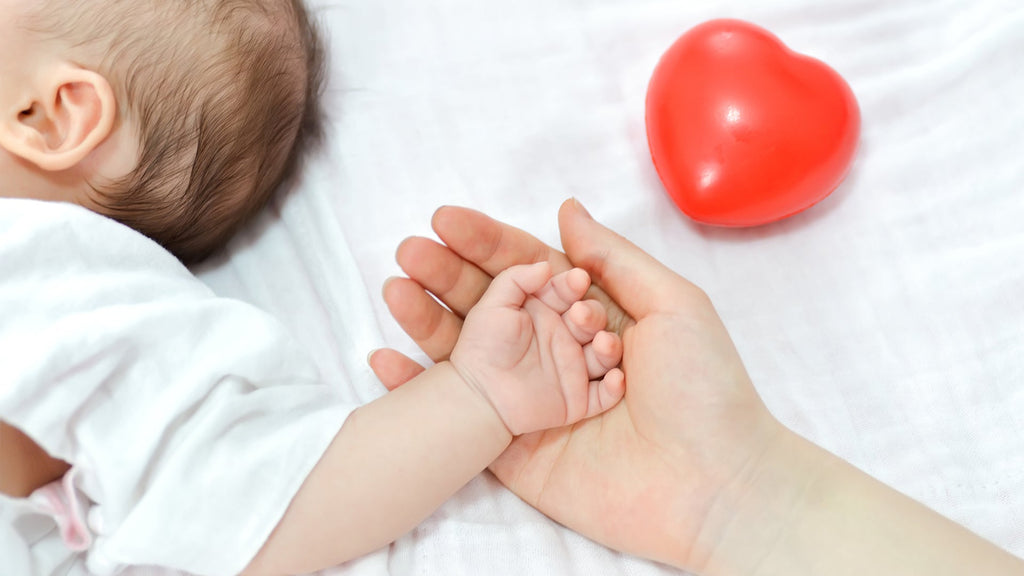
Baby's First Month: Growth and Milestones Achieved
Congratulations on the first month with your newborn! This early stage is a period filled with growth, development and different baby milestones that might seem subtle but are crucial to note and know. As you navigate the first month of parenthood, witnessing your newborn's rapid development is both exhilarating and daunting. Here's an in-depth look at what you can expect from your one-month-old baby, from physical growth to sensory experiences, and some essential parenting tips.
Babies’ Physical Growth and Health
Babies typically gain around 1.5 to 2 pounds and grow approximately 1.5 to 2 inches in length since birth. It's also common for their head circumference to increase significantly. Don't be alarmed if your baby's sex organs appear swollen due to your hormones, which are normal and temporary.
Your baby's healthcare checks will focus on these growth parameters to ensure they are on the right track. Remember, babies grow at their own pace, so variations are entirely normal.
Baby Movement Milestones
In the first month, your baby will mostly exhibit reflexive movements. These are crucial for their motor development:
-
Rooting and Sucking Reflexes
These reflexes help your baby feed effectively, whether they are breastfed or bottle-fed. -
Startle Reflex (Moro Reflex)
Your baby will react with sudden movements if they feel like they are falling. It's a protective measure. -
Stepping Reflex
If you hold your baby upright with their feet touching a solid surface, they might make stepping movements. This won't last long, as it typically disappears after the second month.
Sensory Developments
At one month, your baby's senses are already actively developing:
-
Vision
Your baby will start focusing on objects 8 to 12 inches away and enjoy looking at high-contrast patterns. Your face is their favorite view, one they will begin to recognize and respond to. -
Hearing
Fully developed at birth, your baby will recognize familiar voices, especially yours, and may turn towards sounds. -
Smell
A strong sense of smell helps your baby recognize the scent of your breast milk and is comforted by it.
Baby Milestones to Watch For
During the first month, your baby will hit several developmental milestones:
-
Reflexes
Newborn reflexes like sucking, grasping, and startling are still prominent and are signs of a healthy nervous system. -
Head Control
While still limited, your baby will try to lift their head, especially during tummy time. -
Social/Emotional
The first social smiles may appear around this time, a heartwarming sign that they're starting to engage more with their environment.
Feeding and Sleep Patterns of a one-month-old baby
Feeding will still be on-demand, roughly every two to three hours, whether you're breastfeeding or formula feeding. Your baby will typically consume about 3 to 4 ounces per feeding. Ensure they're feeding effectively by monitoring their diaper output—expect around five to six wet diapers a day.
Sleep is still in short bouts—about 14 to 17 hours spread over a 24-hour period, divided between nighttime sleep and short naps throughout the day. Establishing safe sleep habits is crucial; always place your baby on its back in the baby's cradle.
How Does Baby Look?
The appearance of a newborn can sometimes surprise new parents. Babies often have a slightly misshapen head after birth due to passing through the birth canal. This usually corrects itself within a few days. Many newborns also exhibit milia (tiny white bumps) or baby acne due to maternal hormones, which clear up on their own. Another common feature is a slightly jaundiced hue caused by the buildup of bilirubin; this usually peaks around the third or fourth day after birth and gradually improves. If you notice any significant or prolonged changes in your baby's skin color or condition, it is important to consult with your pediatrician.
Common Health Concerns
Be on the lookout for common issues like cradle cap, baby acne, or more significant concerns like colic, characterized by prolonged periods of crying. Regular checkups will help address and manage these issues early.
Tracking Dirty Diapers
Tracking your baby's diapers is an effective way to monitor their health in the first month. You should see at least five to six wet diapers a day, which indicates that your baby is adequately hydrated. The stools of a newborn will change from the thick, black meconium seen in the first few days to a lighter, mustard color if breastfeeding or a darker stool if formula feeding. The frequency and consistency of their stools can vary widely; however, any signs of dehydration or unusually colored stools should prompt a discussion with your healthcare provider.
Read our blog to learn more - Baby Poop Color
More Health Tips for Babies This Month
Here are some health tips for the first month that can help you ensure your newborn's well-being:
-
Daily Pediatric Check-ups
Schedule regular visits with your pediatrician to monitor your baby's growth and development. These checks are crucial to identify any potential issues early. -
Proper Feeding Techniques
Ensure that your baby latches on correctly during breastfeeding to prevent nipple soreness and to facilitate effective feeding. If using a baby feeding bottle, choose nipples that mimic breastfeeding to avoid nipple confusion. -
Sleep Safety Practices
Always place your baby on their back to sleep to reduce the risk of SIDS. The sleep environment should be firm, flat, and free from soft bedding or toys. -
Hygiene and Skin Care
Bathe your baby two to three times a week to avoid drying out their sensitive skin. Use gentle, artificial fragrance-free washes and baby lotions designed specifically for infants. -
Handling and Comfort
Learn proper ways to hold, burp, and soothe your baby. Gentle rocking, soft singing, or swaddling can comfort your newborn and help them feel secure. -
Monitoring Diapers
Keep track of diaper changes to ensure your baby is hydrated and digesting food properly. Expect several wet diapers a day and regular bowel movements, though frequency can vary. -
Sun Exposure
Limit your newborn's direct exposure to the sun. Use protective clothing and shade as their skin is highly sensitive to UV rays, and chemical sunscreens are not recommended for the first few months.
This first month is just the beginning of a fantastic journey. Each baby is unique, and while milestones provide a guideline, the most important thing is to enjoy the process of getting to know your baby. Keep nurturing, keep loving, and keep learning together!

The Essential Guide to Perfect Swaddling: Techniques and ...

What to Eat When Pregnant: Your Ultimate Guide to a Healt...
Pregnancy is a magnificent experience that comes with excitement, expectation, and a sense of overwhelming responsibility. Childbearing is a period when you should prioritise your health and consider what to consume while pregnant. Starting with conception, maintaining a balanced diet is critical for ensuring your child's optimal health.
In this comprehensive blog, we will get into the intricacies of a healthy pregnancy diet, offering insights into understanding nutrient needs, essential foods for pregnancy, managing nutritional challenges and more.
Healthy Pregnancy Diet
Understanding Nutrient Needs
Embarking on a journey toward a healthy pregnancy begins with understanding the specific nutrient needs of both the mother and the growing baby. A balanced intake of macronutrients, micronutrients, and essential vitamins is essential for the overall well-being of both mother and child. These nutrients play a crucial role in the development of the baby's organs, bones, and overall growth.
Building Blocks of a Healthy Diet
A healthy pregnancy diet should consist of a variety of nutrient-rich foods. The key building blocks include a mix of carbohydrates, proteins, fats, vitamins, and minerals. Folic acid is an essential B-vitamin that plays a crucial role in preventing neural tube defects, supporting the early stages of the baby's spinal cord and brain formation. Ensuring a variety of nutrient-dense foods sets the stage for a well-rounded diet that meets the diverse needs of pregnancy.
Essential Foods for Pregnancy
-
Fruits and Vegetables
A variety of fruits and vegetables in your daily diet ensures a healthy supply of vitamins, minerals, and antioxidants. These nutritional powerhouses contribute to the overall health of both mother and baby. Opt for a variety of colourful options to maximise the range of nutrients.
-
Lean Proteins
Protein is a fundamental component for the development of the baby's tissues and organs. During pregnancy, lean protein sources such as poultry, fish, legumes, and nuts form a nutritious foundation of your pregnancy diet.
-
Whole Grains
Whole grains, like quinoa, brown rice, and oats, provide essential fiber, vitamins, and minerals. These grains contribute to sustained energy levels and help in managing weight gain during pregnancy.
-
Dairy and Calcium-Rich Foods
Ensuring sufficient calcium intake is essential for the growth of your baby's bones and teeth. Include dairy products, fortified plant-based milk, and leafy greens in your diet to meet the necessary calcium requirements.
-
Healthy Fats
Support the development of the baby's brain and nervous system by including sources of healthy fats, such as avocados, nuts, and olive oil. These fats also aid in the absorption of fat-soluble vitamins.
Managing Nutritional Challenges During Pregnancy
Dealing with Nausea and Food Aversions
Many expectant mothers face challenges such as nausea and food aversions during the early stages of pregnancy. To navigate these issues, opt for smaller, more frequent meals and choose easily digestible foods. Ginger and peppermint may also provide relief from nausea.
Addressing Common Cravings
Pregnancy often comes with specific cravings and indulging them in moderation is acceptable. However, maintaining a balance by incorporating healthier alternatives ensures that nutritional needs are still met.
Special Considerations for Vegetarian and Vegan Diets
Vegetarian and vegan diets can be adapted to meet the nutritional requirements of pregnancy. It's important to prioritise protein from plant-based sources while supplementing with vitamin B12, iron, and omega-3 fatty acids as needed.
Hydration
Staying well-hydrated is crucial during pregnancy. Adequate water intake supports the increased blood volume, amniotic fluid, and overall hydration needs of both mother and baby. Aim for at least eight glasses of water a day and adjust based on individual needs.
Foods to Limit or Avoid During Pregnancy
While pregnant, it is essential to be mindful of certain foods.
While focusing on nutrient-rich foods, it's crucial to be mindful of certain foods that may pose risks during pregnancy:
- Caffeine: Limit caffeine intake to moderate levels, as excessive caffeine consumption may be linked to adverse pregnancy outcomes.
- Raw or Undercooked Foods: Avoid raw or undercooked seafood, eggs, and meats to reduce the risk of foodborne illnesses.
- Unpasteurised Dairy Products: Steer clear of unpasteurised dairy products to minimise the risk of infections.
- High-Mercury Fish: It's important to limit the intake of high-mercury fish, like shark, swordfish, king mackerel, and tilefish, as they can cause harm to the developing nervous system.
A healthy pregnancy diet is a cornerstone for the well-being of both mother and baby. By understanding nutrient needs, incorporating essential foods, managing challenges, and making informed choices, expectant mothers can optimise their health throughout this transformative journey. It's important to remember that every pregnancy is unique, so you should consult with a healthcare professional to create a diet tailored to your specific needs. Embrace the joy of nourishing your body and welcoming new life through the power of a wholesome and nutritious pregnancy diet.



